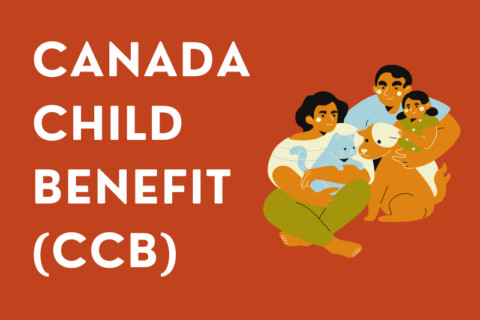Canadians with kids can expect a bit of relief to their wallets on Friday with this month’s Canada Child Benefit (CCB) payments.
The benefit will go out to eligible parents on Friday and differs depending on income and number of children. The Canada Child Benefit has been lauded for cutting down poverty across the country, but still only covers about a quarter of the average Toronto rental cost.
Here’s what you need to know about how much you can get from CCB payments and other benefits, along with how you can apply and when you can expect the payments.
Understanding the CCB and its Updates
The Canada Child Benefit (CCB) is a tax-free monthly payment aimed at helping families with the costs of raising children under the age of 18. Launched in July 2016, the CCB replaced earlier child benefit programs such as the Canada Child Tax Benefit (CCTB) and the Universal Child Care Benefit (UCCB). It is designed to provide higher payments to families with lower incomes, ensuring that those most in need receive the most financial assistance.
Since its introduction, some experts have lauded the policy for reducing poverty across the country and tackling Canada’s child poverty specifically. According to data released by Employment and Social Development Canada in 2023, Canada’s overall poverty rate was cut in half between 2015 and 2021. However, the maximum monthly benefit, even after it got adjusted for inflation in July, only covers a quarter of the average Toronto rental cost in June, not to mention the heightened cost of living since the last release of poverty data.
Key Highlights of September 2024 CCB Payments
The CCB is intended to provide increased support to low- and middle-income families with children. Families with an adjusted net income under the threshold will receive the maximum amount for each child. Payments gradually decrease for those with a net income above that threshold.
The September 2024 CCB payments reflect the annual indexing adjustment, which was applied in July 2024. This adjustment helps families keep pace with rising costs across the country, especially as inflation continues to impact day-to-day expenses.
Understanding the CCB Payment Schedule
Canada Child Benefit (CCB) payments are typically issued on the 20th of each month. If the 20th falls on a weekend or public holiday, payments are usually made the preceding business day.
Below are the payment dates for the rest of 2024:
- October: 18th
- November: 20th
- December: 13th
- January 2025: 17th
- February: 20th
- March: 20th
- April: 18th
- May: 20th
- June: 20th
- July: 18th
Understanding the CCB Payment Amounts
With the annual inflation adjustment applied in July 2024, families will see the following maximum annual benefit amounts:
- Children under six: $7,787
- Children aged six to 17: $6,570
However, the actual sum that families receive varies depending on household income and the number of children. Payments decrease as AFNI increases, but families with lower incomes can expect the full benefit amount.
Here’s an estimate of what families can expect in September 2024 based on their income and family size:
-
Family with one child under six and an adjusted net income of $45,000: $7,192.14 for the July 2024 to June 2025 period.
-
Family with one child between six and 17 and an adjusted net income of $50,000: $6,153.81 for the July 2024 to June 2025 period.
-
Family with two children (one under six and one between six and 17) and an adjusted net income of $60,000: $11,354.34 for the July 2024 to June 2025 period.
Adjusted Family Net Income (AFNI)
Adjusted family net income (AFNI) is the total income of a family after certain deductions, as calculated by the Canada Revenue Agency (CRA) for tax purposes. The income threshold to receive the benefit also increased in July — families with an adjusted net income under $36,502 are now eligible for the maximum amount for each child. The benefit is recalculated and adjusted every July. The benefit Canadians receive from July 2024 to June 2025 will be based on their income from the previous year, 2023.
How to Apply for CCB
To receive the Canada Child Benefit, families must meet several eligibility criteria:
- Canadian residents: Both parents must be Canadian residents.
- Child’s residency: The child must reside in Canada.
- Age: The child must be under 18 years old.
- Child’s legal status: The child must be a Canadian citizen, permanent resident, or a temporary resident who has lived in Canada for at least 18 months and has a valid permit that does not state “does not confer status” in the 19th month.
- Income: The family’s adjusted net income must be within the eligibility limits.
Applying for the Canada Child Benefit is straightforward but requires all necessary documentation to avoid delays. Here’s a step-by-step guide:
- Gather necessary documents: Ensure you have your Social Insurance Number (SIN), the child’s SIN (if applicable), and your most recent tax return information.
- Choose your application method: You can apply for the CCB one of three ways: through birth registration, online through your personal Canada Revenue Agency account or by mail.
- Complete the application: If you’re applying when you register the birth of your newborn, you’ll need to consent and provide your social insurance number. If applying online, you can go through your CRA account online on the benefits page, and processing times take about eight weeks. If applying by mail, the form can be found online and sent to a tax centre — payments will be delivered within 11 weeks.
Understanding the CCB Payment Frequency
The CCB is generally paid between the 17th and 20th of each month, except in December, when the benefit is issued on Dec. 13. However, if you’re annual benefit amount is less than $240, you will only receive a lump-sum payment in July instead of monthly installments.
Maximizing Your CCB Benefits
Maximizing your CCB payments can have a significant impact on your family’s finances. Here are some expert tips to ensure you’re getting the most out of the benefit:
- File your taxes on time: Families should ensure their tax returns are up-to-date to avoid delays in receiving payments. The amount you receive under the CCB is based on several factors, including the number of children in your care, their age, your marital status and your adjusted family net income from last year’s tax return.
- Stay informed about eligibility changes: The income threshold to receive the benefit also increased in July — families with an adjusted net income under $36,502 are now eligible for the maximum amount for each child.
- Consider Ontario Child Benefit: Parents in Ontario can also claim a top-up in the form of the Ontario child benefit, a tax-free benefit delivered alongside the CCB through monthly payments provided by the provincial government. Eligible parents can get up to $140 per month. When you apply for the CCB, you are automatically assessed for the Ontario Child Benefit, according to the province’s website.
- Explore eligibility for retroactive payments: Families may also qualify for retroactive CCB payments. If you recently had a child or experienced a significant income change, you could receive a lump-sum payment covering benefits you were eligible for in previous months but did not receive. To apply for retroactive payments, contact the Canada Revenue Agency (CRA) and provide the necessary documentation.
Challenges with the CCB
Despite the widespread praise for the Canada Child Benefit, there are some challenges families may encounter:
- The cost of living: The Canada Child Benefit has been lauded for cutting down poverty across the country, but still only covers about a quarter of the average Toronto rental cost.
- The potential for delays: There may be delays in receiving payments if your tax information is incorrect or if you have recently moved.
- The need for ongoing awareness: The CCB is a complex program with many rules and regulations. It is important to stay up-to-date on the latest changes and to ensure that you are eligible for the maximum benefit amount.
Conclusion
The Canada Child Benefit continues to evolve, with the September 2024 updates reflecting the government’s commitment to supporting Canadian families. By staying informed and taking proactive steps, such as filing taxes on time and monitoring income changes, you can maximize your CCB payments. Whether you’re a new parent or have been receiving the benefit for years, understanding the intricacies of the CCB program is key to ensuring your family gets the financial support it needs.


















